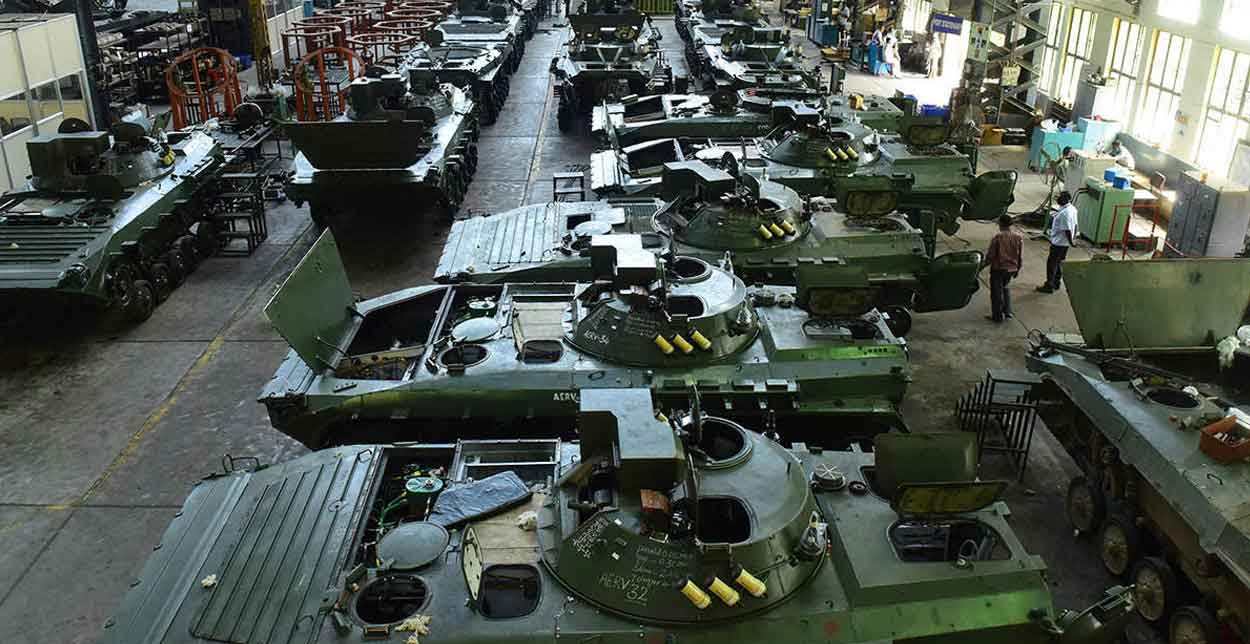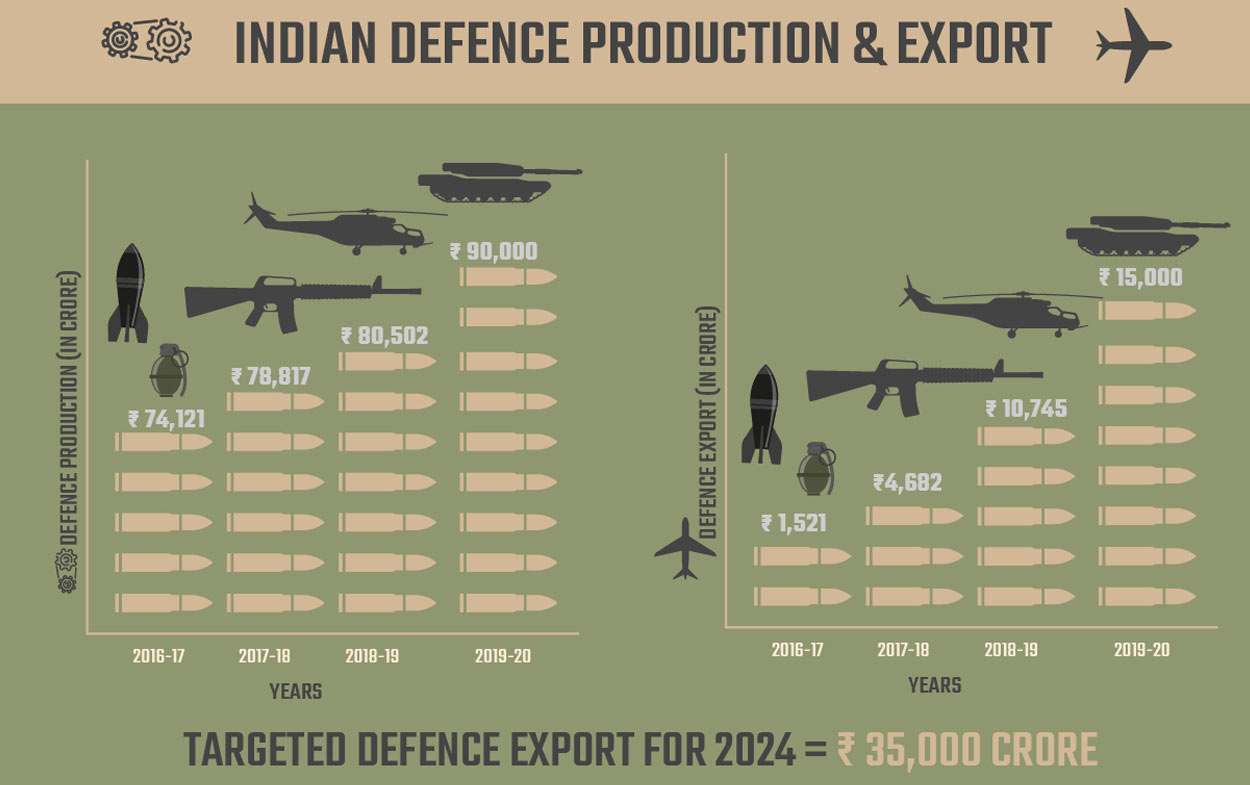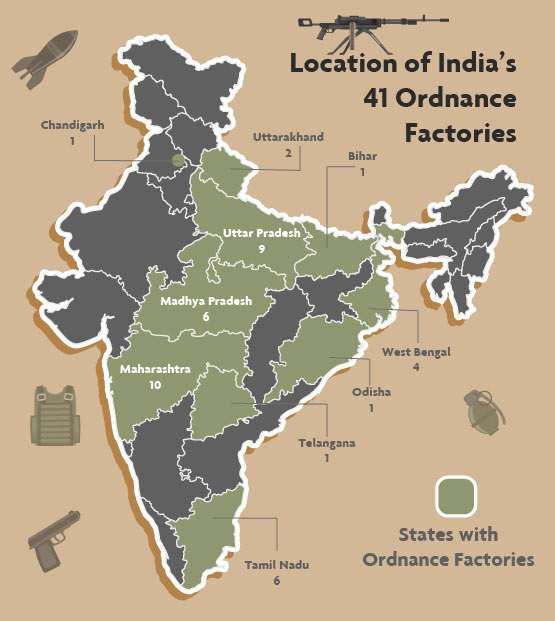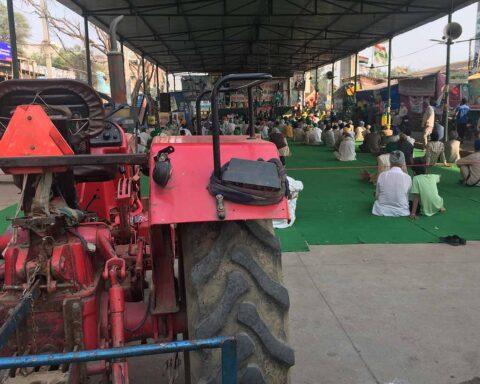Displaying remarkable determination to implement an idea first mooted more than two decades back, the Modi government incorporated 41 ordnance factories into seven defence public sector undertakings (DPSUs) on October 1, 2021. Before corporatisation, these factories were managed by the Kolkata-based Ordnance Factory Board (OFB) which, in turn, functioned under the direct administrative control of the Department of Defence Production (DDP).
The new companies were dedicated to the nation by Prime Minister Narendra Modi at a function organised two weeks later at the Defence Research and Development Organisation (DRDO)’s Kothari Auditorium in New Delhi. In his virtual address on the occasion, he expressed the hope that these companies would play a major role in reducing the country’s dependence on the import of arms.
The prime minister’s expectation is understandable. According to the Stockholm International Peace Research Institute’s report of March 2021, which is based on the data for the period 2016-20, India was the second-largest importer of arms after Saudi Arabia. It is not the kind of record that an aspiring regional, if not global, player like India can be proud of.

Speaking alongside, Defence Minister Rajnath Singh, who presided over the function, added that the objective of the move was to transform ordnance factories into “productive, and profitable assets; improve expertise in product range; increase competitiveness; improve quality; enhance cost-efficiency and ensure self-reliance in defence preparedness”. The objective is noble, but it is arguable if corporatisation by itself can produce the intended results.
This scepticism stems from the fact that the new companies have been created without evolving a comprehensive plan for their transmogrification into highly efficient production units. Consequently, the new companies may struggle to overcome their teething problems and become profitable concerns. As a matter of fact, they will have to perform better than most of the pre-existing nine DPSUs to achieve this.
Corporatisation fits very well into the rhetoric surrounding the government’s flagship Atmanirbhar Bharat Abhiyan, or the campaign for making India self-sufficient, which focuses on the promotion of ‘Make in India’ in 25 sectors, including defence manufacturing. To this end, several policy-related, structural, and procedural changes have been made by the government in recent years.
Work in progress
The list of the putative defence reforms includes measures like increase in the cap on Foreign Direct Investment to 74 percent, creation of the Department of Military Affairs, the embargo on importing 209 defence items, streamlining of the industrial licensing procedure, and revision of the procurement procedures. The corporatisation of the OFB is of a piece with this trend, but like all other reforms this too is a work-in-progress whose success depends on several factors. At least three major factors come to mind immediately.
First, the timing of corporatisation is rather odd. In her last Budget speech on February 1, Finance Minister Nirmala Sitharaman had announced the government’s intention to reduce the number of public enterprises in the strategic sectors to the bare minimum. The surplus enterprises, she added in her speech, would be privatised, merged, subsidiarised with other enterprises, or closed. Defence is one of the strategic sectors that will be affected by any move to reduce the number of defence enterprises which has gone up to 16 with the addition of the seven new companies.
Even before corporatisation, OFB’s overall value of production (VoP) had declined because of 275 items manufactured by various ordnance factories being taken out of OFB’s exclusive production domain and thrown open for procurement from the industry. If the government decides to minimise the number of defence enterprises, some of the new companies which may have inherited the decline in VoP of the merging units will be vulnerable.
According to the Stockholm International Peace Research Institute’s report, based on the data for 2016-20, India was the second largest importer of arms after Saudi Arabia.
At any rate, it is indisputable that many enterprises will lose their present status, or may even be wound up, if the government goes ahead with its plan to reduce the number of enterprises in the strategic sector. The axe could fall on any of the old or new enterprises, but some new enterprises like the Troops Comfort Limited (CFL) and Gliders India Limited (GIL) seem more vulnerable at this stage.
These enterprises manufacture clothing and leather products like military uniforms, winter clothing, tents, parachutes, and boots, and equipment like skid boards and inflatable rubber boats. These are not high-technology products which cannot be made by the private sector. If anything, it may be more cost-effective to let in the smaller private sector players in this area of production.

Uncertain future
Considering that the government is equally committed to promoting the private sector defence companies, it may be hard to justify retention of the public sector enterprises making products that can easily be made by the private sector. The resultant uncertainty about the future of the companies that are vulnerable on this account would affect their business prospects and structural consolidation.
Second, the OFB was constantly criticised for not investing in R&D, failure to absorb technology transferred by the foreign manufacturers, paying little attention to upgrading the production facilities, poor quality control, excessive pricing, and so on. It is futile to go into the reasons why this situation came to pass under the very nose of the DDP, but there is no denying that substantial sums of money are required to address these legacy issues.

It is not known if any assessment was made of the capital required for modernising the production facilities and investing in R&D which are critical for the new enterprises to remain in the game alongside the private sector. This assumes significance because, sooner or later, the new enterprises will have to compete with the private sector to win new contracts and bag export orders to remain commercially viable.
What could add to the financial woes is the MoD’s decision on grandfather pricing which requires the new enterprises to continue to honour the old orders without any increase in the price already agreed upon before corporatisation. Considering that hardly any element of profit was built into those prices, the newly incorporated enterprises will not earn any profit and generate capital for the modernisation of the production facilities.
It was reported in a section of the media in October 2021 that the past indents worth Rs. 65,000 crore placed on the ordnance factories were being converted into 66 contracts and that advance payment of Rs. 7,100 crore would be released to the new enterprises, creating the impression that it will ease the situation in so far as the requirement of capital is concerned.
Grandfather pricing, i.e. to continue old orders without any price increase can add to the DPSUs’ financial woes.
This is not so. As mentioned earlier, grandfathering of the old indents, which have been converted into contracts, leaves no room for the generation of any surplus income for funding any modernisation plan.
Consequently, it remains unclear where the money for capital investment by these enterprises will come from without which they cannot realise their growth potential, promote innovation, generate employment and new business, make inroads into the export market, and generally meet the armed forces’ expectations of sourcing better quality products at lower prices from these companies.
Legacy issues
Third, several legacy issues continue to hang fire. For one thing, the new enterprises are expected to achieve the intended objectives with the same human resource which ran the ordnance factories and was incessantly pilloried for lack of professionalism in managing the production units, indifference to research and development, cost-inefficiencies, time overruns, and poor quality.

The officers and workmen of the erstwhile OFB transferred en masse to the seven new enterprises face an uncertain future. The government has decided to continue with the terms and conditions which applied to them before corporatisation, for the next two years. This decision may have averted an immediate crisis, but this cannot pep up the 80,000-plus workforce employed in the seven enterprises for they know not what will happen after two years. It is naïve to expect people facing a potentially bleak future to produce sparkling results.
There is incessant criticism of the older DPSUs on similar grounds which were used to push the case for OFB’s corporatisation. There is no reason to believe that in their new avatar as public sector enterprises, the 41 ordnance factories will magically overcome all those real or imaginary shortcomings for which the OFB was criticised, start performing better — even surpassing the older DPSUs — without the new challenges that have surfaced being addressed imaginatively by the government.
Corporatisation is just the beginning of a long and uncertain journey for the new enterprises. How they shape up will depend to a considerable extent on the way the situation is handled by the DDP under whose tutelage OFB has been reduced from being the 37th largest defence equipment manufacturing conglomerate in the world and the second-largest in Asia to seven public sector corporations. Minimising its control over the DPSUs, often bordering on interference, and allowing them to be run professionally by their management, maybe a good starting point for the DDP.
By Amit Cowshish


























